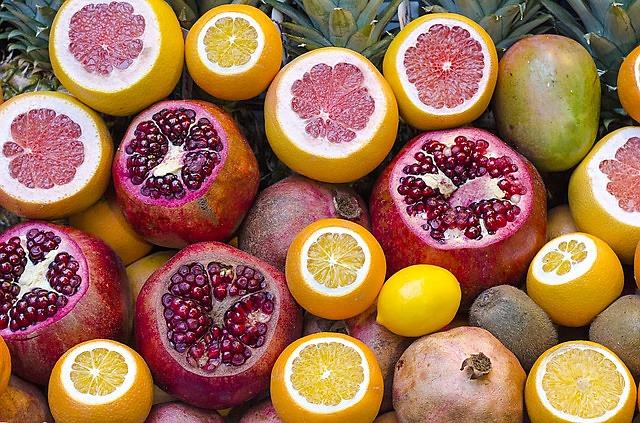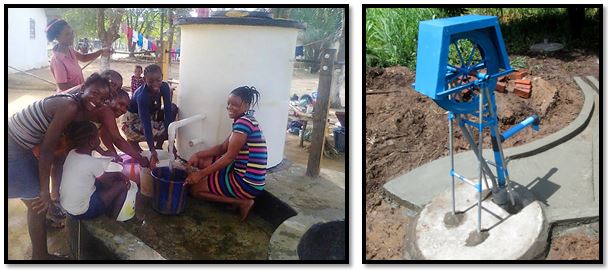
by Fern Shaw | Mar 4, 2016 | Water, water cooler
Does Drinking Water make you Smarter?
Quite simply, yes, it does. How so, you ask (with a healthy lean towards scepticism)? Well, it’s like this:
Every single organ in our bodies relies on being hydrated (i.e. water) to function; this includes the brain.
While you may not realize it, dehydration causes more than just thirst. Water plays an important role in the function of our cells, tissues and organs. Water transports oxygen to the brain, which allows it to communicate important messages to the rest of the body. Even the slightest lack of hydration can reduce your concentration and impair your ability to think clearly and perform well.
Water plumps up our cells, every single last little man jack of them. Think of the benefit of water in terms of when you have dry skin. It becomes shrivelled and crêpe-like the more dehydrated you are. Look at what happens when you rehydrate – your skin becomes noticeably more plumped up, smoothed out and more elastic.
Now picture this example in terms of at a microscopic level – imagine your brain cells lying all flat and sad looking, like a person in a desert, dragging themselves along, trying to function with their body’s resources depleted. They then see an oasis and manage to drink from it. Skip forward in time and that same sad looking, flattened out individual has been transformed into a fully functioning, walking, talking and much happier person all round. The same goes for your cells.
Ergo, our brains depend on proper hydration to function optimally. Brain cells require a delicate balance between water and various elements to operate, and when you lose too much water, that balance is disrupted. Your brain cells lose efficiency.
Years of research have found that when we’re parched, we have more difficulty keeping our attention focused. Dehydration can impair short-term memory function and the recall of long-term memory. The ability to perform mental arithmetic, like calculating whether or not you’ll be late for work if you hit snooze for another 15 minutes, is compromised when your fluids are low.
Over the course of a typical twenty-four hour period, the longest spell most of us go without fluid intake is the six to eight hours we spend sleeping. Sleeping is hardly the kind of activity that you sweat over, but that doesn’t mean you’re not losing water during the night. With every somnolent breath, you expel moisture, and the cumulative effect of a night’s sleep is to dry out.
This may sound like a tome of doom and gloom, but really, if you think about it, it really isn’t. In general, our nearest water source is a small reach or just a few steps away and that’s such good news.
If you want to test the theory, dearie, (I’m not suggesting that you purposefully dehydrate yourself), as you may already know that you probably aren’t drinking enough water daily, or you’re feeling sluggish or don’t have much get-up-and-go; why not try up your water intake? Take your own water bottle to work, replenish from your water cooler often, drink water when you arrive home. You’ll be amazed by the differences and it won’t take too long either if you stick with the ‘hydrate me, myself, I’ campaign.
Before long the only thing that’ll be flattened is that pile of work at your desk and all your paperwork at home. Cheers.

by Fern Shaw | Feb 4, 2016 | Water
Before you start up with an eager rendition of ‘We All Live in a Yellow Submarine’, just …. don’t. Please. I’m not anti one of the greatest bands of all modern time, but that song, just … no.
Anyhow, I digress. Being a touch claustrophobic, the mention of submarines makes me a little squirmy. The thought of being inside a submarine and they close the hatches, well, let’s just say that a nuclear meltdown will have nothing on the volatility of my reaction. Submarines do however (as is with all ocean-going vessels) fascinate me. I actually worked with a chap who had been in the submarines during his stint in the Navy. I was enthralled when he told me about the training and the psychological testing the cadets were put through as part of their preparation to ensure that there was little chance of the cadets going doolally should they qualify to crew a sub.
As a tour on a submarine can last as long as ninety days, it would be sensible to establish that the inhabitants can withstand cramped living and working quarters; little privacy; no fresh air or fresh food, one shower amongst forty sailors and potentially, anyone crewing with you having a bad day if not worse than the one you’re having.
Theoretically though, a modern-day submarine can stay underwater indefinitely. Its air system is completely independent, generating oxygen from seawater if necessary, and the freshwater and heat is produced on-board too.
Subs can even make their own drinking water from seawater using electricity to remove the salt.
All these modern day advances aside though, you’re still squished into living quarters with no daylight for weeks at a time though, so again, I doff my cap to these brave souls – I certainly wouldn’t be able to pull it off.

by Fern Shaw | Nov 9, 2015 | Water
Last year I blogged about Bonfire Night or Guy Fawkes Night as it’s also called. Although the tradition of Guy Fawkes stems from an historical political event, it’s lighting up the darkness, so to speak, and so fits right in with a number of autumn time traditions, some originating hundreds of years ago.
There are men who carry flaming barrels of tar through a Devon village; folk who pour cider over apple tree roots and cross-dressing troupes who perform something called Soul Caking to ward off evil spirits.
Souling is a centuries-old tradition in Cheshire where actors known as ‘mummers’ perform a play for All Souls Eve on 1 November.
The tradition of Souling was intended to protect communities against outsiders and dark spirits.
Souling plays were fairly widespread until the 19th Century. The most famous ones performed nowadays are at Antrobus, Comberbach and Warburton.
The tradition is also known as soul caking – due to mummers traditionally handing out confectionery known as ‘soul cakes’ to the audience at the end of the play. In an example of how tradition piles upon tradition, this is itself believed to be based on the even older medieval practice of handing out cakes to beggars in remembrance of the dead.
The Ottery St Mary Tar Barrel Festival, in Devon, on 5 November is also believed to have started after the Gunpowder Plot.
The tradition sees competitors – who have to have been born in the town – running with burning barrels on their backs until the heat becomes too unbearable or the barrel breaks down.
At some stage through the ages Ottery St Mary decided rolling and kicking lighted barrels through the streets was a little tame so they were picked up and carried through the streets on the shoulders of the participants,”
However, this is one tradition in danger of being snuffed out, because of increasing public liability insurance costs. At last year’s event, 16 people suffered minor burns. Refer to my notes on water later on in this blog.
Then there’s Punkie Night, only celebrated in Hinton St George, Somerset, which has traditions of pumpkin carving and night-time walks that are remarkably similar to the Halloween rituals we all know.
The village’s Punkie Night takes place on the last Thursday in October. Children carry ‘punkies’ – lanterns traditionally made from a large turnip known as a mangel-wurzel – and stop at key locations to sing the Punkie Song.
Far from courting the dead, like Halloween, the tradition allegedly stemmed from a bunch of inebriated villagers.
“The men folk of the village went to Chiselborough Fair about four miles away and they had too much to drink,” says local historian Charles Bird.
“The women folk went to fetch them and, because it was so dark and windy, carved mangels and put a candle inside it”.
There’s even a Punkie Song (origins of the Punk Movement? Nah, probably not!):
It’s Punkie Night tonight!
It’s Punkie Night tonight!
Adam and Eve would not believe
It’s Punkie Night tonight!
Give me a candle
Give me a light
If you haven’t got a candle
A penny’s all right
On the whole however, English autumn traditions are concerned with marking the end of the harvest and respecting the dead.
In case you’re wondering about the title, think about it in these terms – there seems to be a lot of tomfoolery; imbibing of alcohol and fire involved in carrying out these traditions, therefore perhaps best if you’re of a mind to participate in any of these Autumn time traditions that you carry a lot of water with you;
- For drinking because you’re revelling;
- For drinking (again) because you’re imbibing and need to keep hydrated or;
- To pour over yourself in case you catch alight.
Right, off you go then, make merry and enjoy the Autumn festivities!

by Fern Shaw | Nov 9, 2015 | Health and Hydration, Water
Typing the query ‘which fruit contains the most water’ into the omnipresent Googlio, and BAM! this is what came up:
‘Grapefruit.’
Then more about watermelon and strawberries – thing is, watermelon and strawberries seem to contain more water than grapefruit – ninety two percent as opposed to the ninety one percent of water in grapefruit. This leads me to believe that there’s some secret grapefruit marketing organisation that’s fruit bombing Googlio to ensure that the lesser watered grapefruit receives pole position.
Anyhow, I’m all okay with it – I really enjoy grapefruit, not so much watermelon. It may stem from my clever mother who used to prepare our half a grapefruit with a sprinkle of brown sugar and a Maraschino cherry on top every single morning, rain or shine; or because I’ve just always enjoyed the more citrus of fruits.
Grapefruit also contain powerful anti-oxidants. What are anti-oxidants? Well, simply put, they are one of the first lines of defence that the body employs to keep free radicals in check and prevent them from causing a domino effect of damage on other cells. Antioxidant compounds can ‘donate’ electrons to unstable free radicals so they don’t have to snatch electrons from unsuspecting nearby cells.
The rich pink and red colours of grapefruit are due to lycopene, a carotenoid phytonutrient. A carotenoid gives fruit their red, orange and yellow colour. These compounds are believed to protect against certain cancers, heart disease and even vision loss due to macular degeneration. You won’t find lycopene in white grapefruit. White grapefruit? Didn’t know there was white grapefruit! Continuing, lycopene appears to have anti-tumour activity. Among the common dietary carotenoids, lycopene has the highest capacity to help fight oxygen free radicals, which are compounds that can damage cells.
So, aside from its top ranking despite it having the second highest water content, it would seem that grapefruit is all that.
Something to keep in mind as we head into the colder months and you’re probably more inclined towards comfort food and drinking less water, is to look to the grapefruit with its high water content and it being packed full of all that is good for you.

by Fern Shaw | Nov 9, 2015 | Water
Recently I blogged about various dishes with really bizarre names that originate from different cultures. I also mentioned that we Britons certainly aren’t alone when it comes to naming our scoff weirdly.
I said that at a later date I’d be expounding further on more of these dishes found in Britain, so without further ado, I present these to you. I’m going to grade these dishes in the following manner – the more unsightly or unpalatable a dish (in my very unprofessional opinion) – the more glasses of water you need to drink while consuming the dish.
Toad in the hole
Perhaps Britain’s least appetisingly-named meal, this dish of sausages in Yorkshire pudding batter is said to have gained its unusual moniker because it looks like toads popping their heads from a hole (yes, I know, I can’t really see it either). Can’t stand the dish? At least you’re not eating it in the Victorian period, when it was common to use any available meat, however old or unpleasant. Mrs Beeton suggests rump steak and lamb kidney. ~ ½ a glass of water.
Bubble and squeak
Once upon a time, thrifty Britons with left-over vegetables and potatoes from a roast dinner wouldn’t have even considered throwing them away – they’d have fried the remnants up to make bubble and squeak. The name comes from the sizzling noise the vegetables make in the pan, though it could also adequately describe the horrified sounds your children emit next time you propose to cook it. ~ 0 glasses of water. Delicious meal if cooked right.
Welsh rarebit/rabbit
Tourists in Wales must be regularly disappointed to find that the traditional ‘rabbit’ they’ve ordered is little more than a gourmet version of cheese on toast. The name is said to be something of an English joke, coined in the 18th century when many Welsh were so poor they could not even afford a cheap meat like rabbit. Hilarious. ~ 0 glasses of water. Delicious.
Stargazey pie
Stargazey pie sounds rather quaint, but this Cornish dish of pilchards baked under a pastry crust won’t appeal to everyone – it traditionally has fish heads poking through the crust, so they appear to be gazing up at the sky. Legend has it that the dish originates from the village of Mousehole, where a plucky fisherman called Tom Bawcock once saved his fellow villagers from starvation by braving the stormy seas to catch a record haul. The fish were baked poking out of the pies, to prove to everyone that there was fish inside. ~ 1 glass of water.
Angels on horseback
This traditional Victorian appetizer of oysters wrapped in bacon and grilled is little known today. But the snack’s dastardly cousin, the devil on horseback (prunes or dates wrapped in bacon) is still a common feature of our Christmas dinners.
~ 1 glass of water.
Stinking Bishop
Anyone who’s been within smelling distance of this particular cheese understands the first part of its name: The wheels are said to have an odour that brings to mind dirty socks and wet towels. But the second half is purely coincidental. It’s actually derived from Stinking Bishop pears, whose juice the cheese is immersed in. The pears got their name from their farmer, Mr. Bishop.
~ 2 glasses of water. And a clothes peg for your nose.
Headcheese
Oddly enough, headcheese isn’t cheese at all. But you’re going to wish it were. The gelatinous meat is made from chopped-up bits of the head of a pig, calf or cow – including the tongue – and sometimes the feet and heart. The origins of its name are unclear, but it’s been suggested the source of the name could be either because the recipe used to contain cheese or because of the connected etymology of the words cheese and moulded (moulds are used to make headcheese).
~ One of our 18.9ℓ bottles of water. Minimum.

by Fern Shaw | Sep 15, 2015 | Water
Here at AquAid, we’ve always believed that an integral part of good business practice is helping those less fortunate – especially those far flung communities in Third World countries.
This philosophy was put into effect by ensuring that a portion of proceeds from all sales of our water cooler products was donated to sustainable charities such as Christian Aid and The Africa Trust.
The Africa Trust itself has gone from strength to strength – with more than 5,000 water wells, known as Elephant Pumps, built throughout Africa since 1998.
Building the Elephant Pumps has taken the teams from Zimbabwe, Uganda, Malawi, Tanzania, Kenya, and Liberia where these wells now provide potable water for millions of people.
The original Elephant Pump is suitable for high levels of usage and also for deep water tables. Although the aim is for one pump to be for around 300 beneficiaries per pump, in some cases many more people end up using a single pump.
But what happens when you enter regions where the water table is not that deep or the community is smaller? If you’re Ian Thorpe, CE of The Africa Trust and inventor of The Elephant Pump, you design an alternative.
So, without further ado, we introduce *trumpet* to you the ‘Baby’ Elephant Pump.
- This smaller pump has recently been introduced in in a trial project in Mozambique, where there are areas where the communities are more dispersed with small clusters of families.
- A pump which lifts water only 5-10 metres and serves just 50 or 100 people doesn’t need to be built with such robust materials such as is the case with the original ‘parent’ Elephant Pump, hence the design and building of the Baby Elephant Pump.
- The design is cheaper and has been developed for individual homesteads rather schools or villages therefore the smaller pump costs less than half the cost of the more robust village model of Elephant Pump.
If you would like to find out about sponsoring the building of one of these pumps without any additional cost to you*, please contact Shelly or call 01223 508 109 – we’ll be delighted to assist you.
*This offer is only available to AquAid customers.






